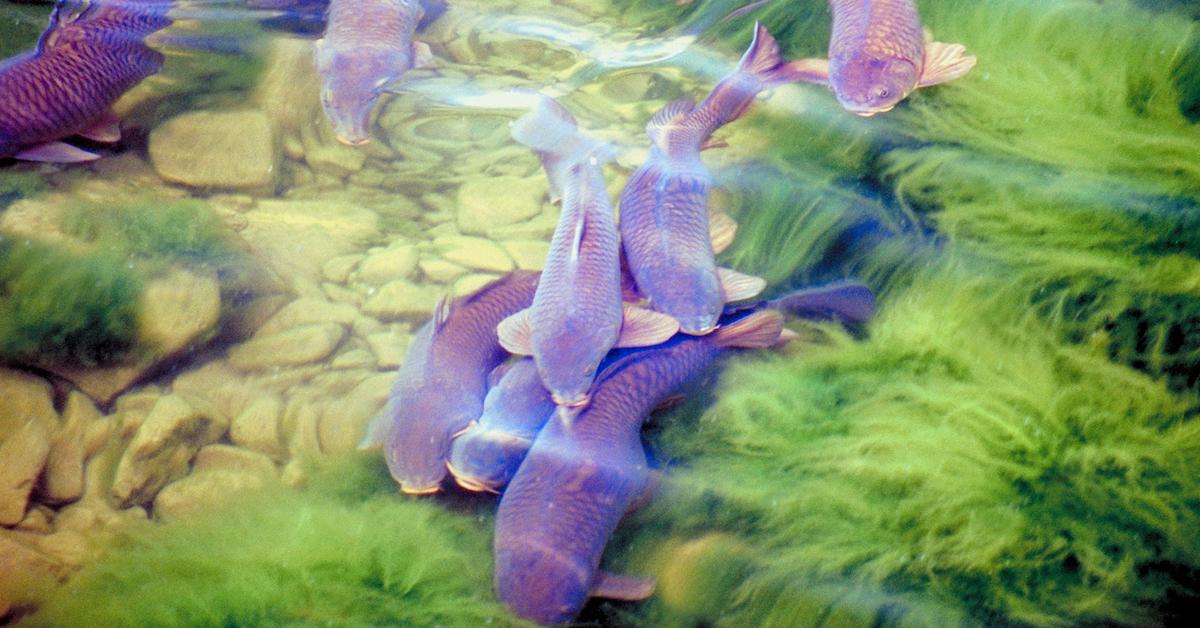Freshwater Fish Nationwide Test for High Levels of PFAS, or "Forever Chemicals"
Published Jan. 17 2023, 2:17 p.m. ET

If you're looking to transition from eating red meat, you may have started looking to kickstart the process with a pescatarian diet. However, that may not ultimately be the healthiest or most planet-friendly way to do so. In addition to the known abusive and pollutive practices within the fishing industry, a new study shows freshwater fish are contaminated with PFAS levels nationwide — needless to say, you may want to hold off on eating certain fish.
For decades, scientists had suspected that food could be a leading culprit for PFAS exposure, per The Hill. It was specifically identified among fish swimming in the Tennessee River, back in 1979.
“Food has always been kind of the hypothesis of how most people are exposed to PFAS compounds,” corresponding author David Andrews, a senior scientist at the Environmental Working Group stated, via The Hill.
Most recently, 152 fish were tested from the U.S. Great Lakes, and all of them tested for contaminants, with levels higher than anywhere else.
“PFAS contamination may be of particular concern for the Great Lakes ecosystem and the health of people who depend on fishing on the Great Lakes for sustenance and cultural practices,” the authors of the study stated, also according to The Hill.
That said, it's important to keep those dependent on local fish informed.

Freshwater fish nationwide are evidently highly contaminated with PFAS.
Eating fish may not be as good for you as once presumed.
According to CNN, freshwater fish from major streams, rivers, and Great Lakes across the U.S. have tested for deadly levels of PFOS. Per the report, published in the journal Environmental Research, PFOS are a type of PFAS — a manmade additive that are both poisonous and non-degradable. Once found in nonstick and stain-resistant items, these chemicals have been largely phased out, but as previously mentioned, they last forever.
Since the 1950s, forever chemicals have made their way into public waterways and wells. They build up in animals and humans, triggering health issues from cancer to metabolic disorders. And because they build up in the fish that swim in freshwater, fish transfer that large amount of forever chemicals, to the person who eats it.
Freshwater fish showed more than 8,000 parts per trillion of PFOS. When the fish is eaten, it transfers way more PFAS than it would take from drinking the water.
“You’d have to drink an incredible amount of water — we estimate a month of contaminated water — to get the same exposure as you would from a single serving of freshwater fish,” study coauthor David Andrews, a senior scientist at Environmental Working Group, stated. “Consuming even a single (locally caught freshwater) fish per year can measurably and significantly change the levels of PFOS in your blood."

It was already known freshwater in the U.S. is highly contaminated with PFAS.
While this finding may come as a shock to some, PFAS have had a known presence in freshwater for quite a while.
In 2021, POTUS Joe Biden announced a potential regulation on PFAS levels in drinking water, to prevent people from getting sick.
Even though a few U.S. states already have rules in order for regulating less than 10 varieties of PFAS, this would make a huge difference for ecosystems and communities alike.